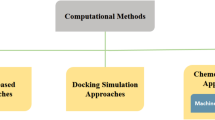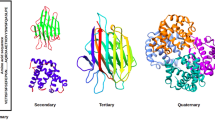Abstract
With the development of bioinformatics, more and more protein sequence information has become available. Meanwhile, the number of known protein–protein interactions (PPIs) is still very limited. In this article, we propose a new method for predicting interacting protein pairs using a Bayesian method based on a new feature representation. We trained our model using data on 6,459 PPI pairs from the yeast Saccharomyces cerevisiae core subset. Using six species of DIP database, our model demonstrates an average prediction accuracy of 93.67%. The result showed that our method is superior to other methods in both computing time and prediction accuracy.

Similar content being viewed by others
Abbreviations
- PPIs:
-
Protein–protein interactions
- DIP:
-
Database of interacting proteins
- PDB:
-
Protein data bank
- SVM:
-
Support vector machine
- EPR:
-
Expression profile reliability
- PVM:
-
Paralogous verification method
- TP:
-
True positive
- TN:
-
True negative
- FP:
-
False positive
- FN:
-
False negative
- ROC:
-
Receiver operating characteristics
- AUC:
-
The area under the curve
References
Berman HM, Westbrook J, Feng Z, Gilliland G, Bhat TN, Weissig H, Shindyalov IN, Boume PE (2000) Nucleic Acids Res 28(1):235–242
Bock JR, Gough DA (2001) Bioinformatics 17(6):455–460
Chou KC (2001) Proteins: Structure Funct Genet 43(3):246–255
Cooper GF, Herskovits E (1992) Mach Learn 9(4):309–347
Fukuhara N, Kawabata T (2008) Nucleic Acids Res 36:W185–W189
Guo YZ, Yu LZ, Wen ZN, Li ML (2008) Nucleic Acids Res 36(9):3025–3030
Hopp TP, Woods KR (1981) Proc Natl Acad Sci USA 78:3824–3828
Jansen R, Yu HY, Greenbaum D, Kluger Y, Krogan NJ, Chung SB, Emili A, Snyder M, Greenblatt JF, Gerstein M (2003) Science 302(5644):449–453
Jiang MH, Anderson J, Gillespie J, Mayne M (2008) BMC Bioinformatics 9(192):1–11
Krigbaum WR, Komoriya A (1979) Biochim Biophys Acta 576(1):204–228
Kandel D, Matias Y, Unger R, Winkler P (1996) Discrete Appl Math 71:171–185
Lo SL, Cai CZ, Chen YZ, Chung MCM (2005) Proteomics 5(4):876–884
Skrabanek L, Saini HK, Bader GD, Enright AJ (2008) Mol Biotechnol 38(1):1–17
Tanford C (1962) J Am Chem Soc 84:4240–4274
Wang CS, Cheng JX, Su SB, Xu DZ (2008) ADMA 2008, LNAI 5139:207–216
Witten IH, Frank E (2005) Data mining: practical machine learning tools and techniques, 2nd edn. Morgan Kaufmann, San Francisco
Zhou HX, Qin SB (2007) Bioinformatics 23(17):2203–2209
Acknowledgments
This work was supported partially by the Project of Provincial Natural Scientific Fund from the Bureau of Education of AnHui Provience(Nos. KJ2007B066, KJ2007A087).
Author information
Authors and Affiliations
Corresponding author
Rights and permissions
About this article
Cite this article
Wang, C., Cheng, J. & Su, S. Prediction of Interacting Protein Pairs from Sequence Using a Bayesian Method. Protein J 28, 111–115 (2009). https://doi.org/10.1007/s10930-009-9170-7
Published:
Issue Date:
DOI: https://doi.org/10.1007/s10930-009-9170-7




